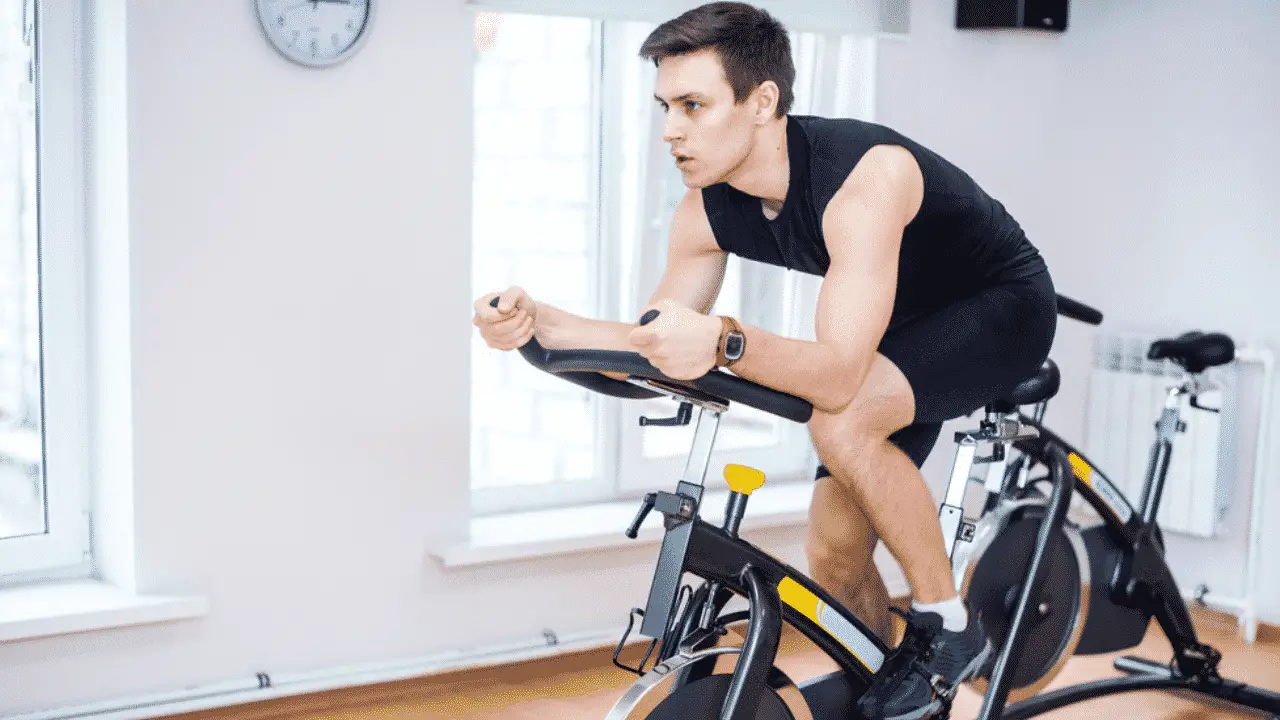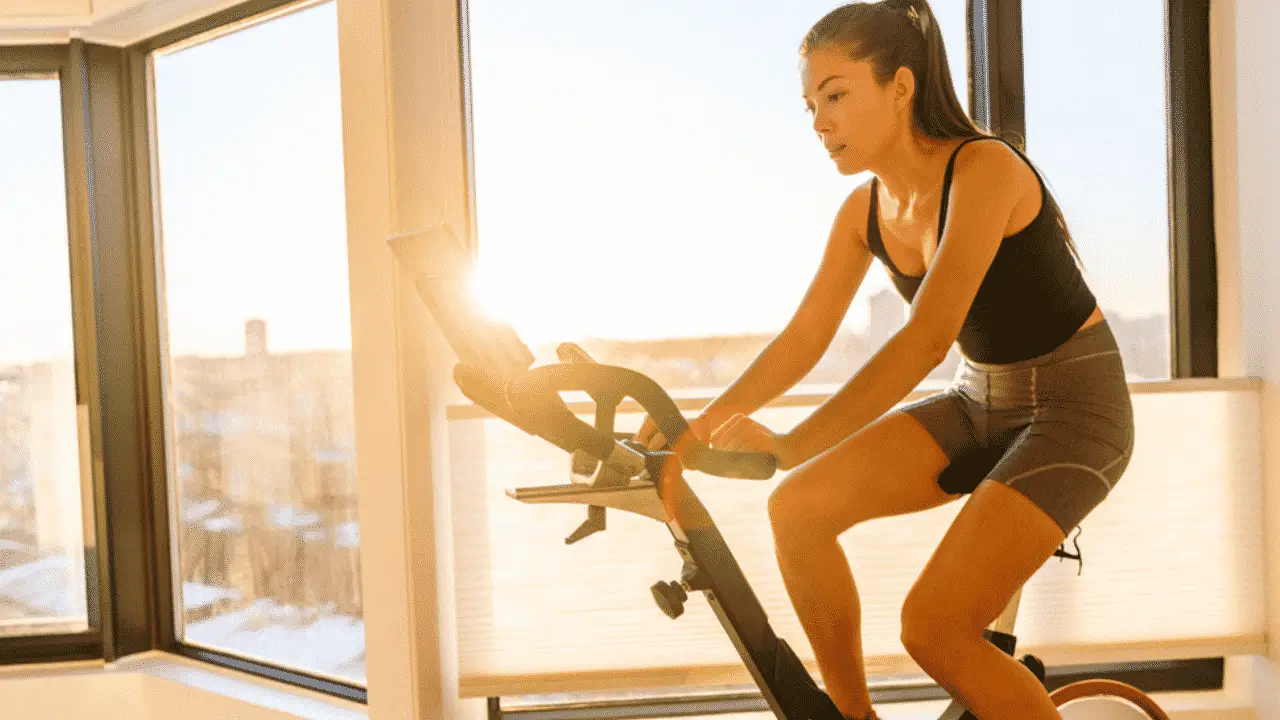A stationary bike is an excellent indoor exercise option and can be used by people of all ages. And it has many benefits, too.
From helping you to cut back your fat to act as a stress reliever to giving you numerous cardiovascular benefits few people can question the effectiveness of this exercise equipment.
So is it okay to ride a stationary bike every day? Due to the many benefits of stationary bikes, we say yes. Here are more reasons why.
Contents
Why Riding a Stationary Bike Everyday is Beneficial to Your Life

Boosts cardio fitness
Riding an exercise bike offers an excellent way to get your heart pumping the right way. In fact, cycling strengthens your heart, muscles, and lungs.
Also, these exercises can improve blood and oxygen flow throughout your body. In turn, this can be advantageous to your life in so many different ways. It can:
- Improved brain functioning and memory
- Better blood sugar levels
- Better sleep patterns
- Boosted energy levels
- Lower levels of stress
- Better mood
- A stronger immunity system
It can help with weight loss
With an exercise bike, you can burn as much as 600 calories an hour, although this depends on your body weight and your workout intensity.
For this reason, a stationary bike is a great option for those who want to burn calories fast and safely. The key to losing weight is burning more calories than you eat.
It is a form of Low Impact exercise

Riding a stationary bike is a good low impact exercise, which means it protects your joints.
Also, if you are recovering from an injury and you require less intensive exercise options, a stationary bike is a great option. The best part is that you can adapt your workouts to match what you can handle.
When you stand up, your body weight is added to the workout. This puts a little extra pressure on the joints compared to when you are seated.
However, it also means you can add bodyweight to the training without necessarily adding impact. Moreover, spinning helps to build stability and strength on your shoulders, neck, and lower back, without having to run.
Joint Friendly

An exercise bike training is extremely friendly to your joints. Unlike other aerobic activities like team sports or jogging, riding a stationary bike is very kind to your joints because of its low impact nature.
A stationary bike lets you pump your heart rate without necessarily stressing your joints. A bike is particularly great for individuals who are overweight by more than 50 pounds as it reduces stress on the hips, back, ankles, and knees.
Riding an exercise bike everyday is even more joint-friendly than walking! You can perform even do it every day without putting yourself at risk of injury.
Watch Out for Overuse Injuries
While a stationary bike is a low-impact exercise option, you should be careful not to over-train.
Overtraining isn’t just a general potential hazard more so for those working out daily but it can also lead to overuse injuries if you repeat the same type of exercise over and over.
Therefore, rather than ride your bike every day, you may want to take a break of one or two days a week. Instead, use this time for cross training with different exercise activities.
Equally, low-impact and cardio-intensive exercise activities include swimming, pedaling and elliptical training machine, and inline skating among other exercise options.
How Do You Know You're Over Training?

Believe it or not, there is something called too much exercise, and it even occurs on a gentle and simple activity like riding an exercise bike. So how do you know that you need to take a break and rest for a day or two? Watch out for these signs:
1. Your Body is Tired
Overtraining doesn’t just mean doing too much workout too hard. It occurs when you overdo it while not giving your body enough time to recover. Just as hard work is important in training, so is rest. If you skimp on recovery times, you could even suffer from overtraining syndrome.
Instead, watch out for subtle signs that might indicate you have over-trained. These include lack of sleep, muscle or joint pain, depression, sudden performance drops, headaches, and loss of appetite.
2. Raised Heart Rate
Take a measurement of your resting heart rate, and after you have determined a baseline, you can use this as an indicator of how well you are recovering after every training session.
But remember that your heart rate could rise from many other things apart from over-training. Things like stress or a bout of illness could lead to the same.
Take your measurements the first thing when you wake up. This is best taken as an average over several minutes using an electronic heart monitor.
Bottom Line
Generally, there are many benefits to riding an exercise bike regularly. These include a boosted immunity system and losing weight.
According to the Center for Disease Control and Prevention, you are recommended to do an average of 150 minutes of moderate cardio exercises per week for adults (source). A stationary bike is a fantastic way of fulfilling this recommendation and taking advantage of these benefits.
Gradually work your way to longer rides if you cannot manage the recommended 150 minutes per week at the start. While riding an exercise bike has many obvious benefits, it is advisable to cross-train it with other activities once or maybe twice a week.
This not only helps to break the monotony but also allows your body to work out other muscles and also prevent burnout. If you want other low-impact activities that you can vary your bike rides with, they include swimming laps and elliptical trainers.
Not only are they also low-impact but they are also great for improving your heart health and burning calories. Moreover, they also prevent injuries and are ideal for those who are just returning to full fitness after an injury layoff.

